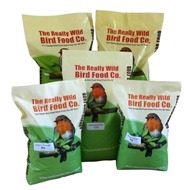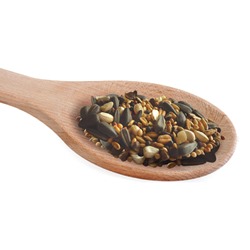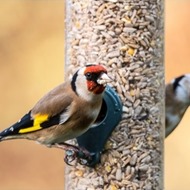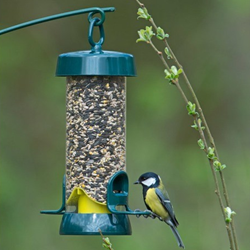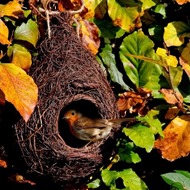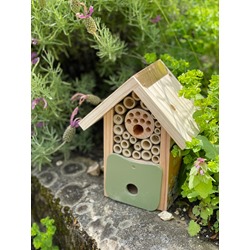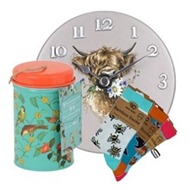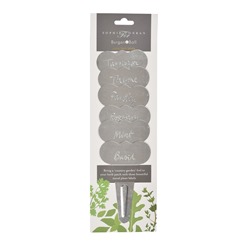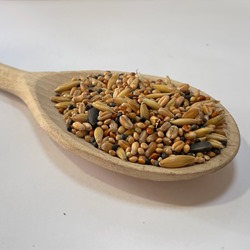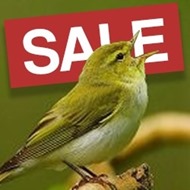
No Mow May is an annual campaign started in 2019 by conservation charity Plantlife. The campaign encourages people to put down their mowers for the month of May in order to let wildflowers and your local biodiversity flourish.
Who Can Participate in No Mow May?
Anyone can participate! Whether you live in a city, town or in the countryside, it’s super easy to take part – all you need to do is stop mowing your lawn!
If the idea of a completely wild lawn is too much for you, you can just choose a small section of your garden to grow. No lawn is too small, even the smallest wild patch can provide the vital food and habitats needed by bees and butterflies.
Why Is No Mow May Important?
No Mow May is one of the easiest ways you can help your local wildlife and connect with the nature around you. Not only does having a long healthy lawn help to encourage vital pollinators, but it also helps to support declining species of wild plants and tackle pollution by absorbing carbon dioxide from the atmosphere.
In recent years, insects have been in worrying decline with butterflies down by around 50% since 1976 and 13 species of bees now extinct. By leaving your garden to grow wild, you are throwing a much-needed lifeline to these pollinators who will then repay you by boosting your ecosystem and showering you with a selection of beautiful, vibrant wildflowers.
Plantlife campaign research has even revealed that mowing your lawn less frequently can provide enough nectar for ten times the amount of bees, butterflies, moths and other pollinators!
What Else Can I Do?
If you want to go a step beyond just leaving your lawn wild, considering sowing some wildflower seeds in your local green spaces and gardens. Approximately 97% of flower-rich meadows have been lost since the 1930s, and with them, vital food and habitat needed by wildlife. So alongside leaving your lawn long, you can plant some wildflower seeds to give your local pollinators that extra boost!
Plus, you don’t have to stop all your efforts in May! You can continue to manage your garden in a way that attracts and supports wildlife all the way through the year. For example, you can mow less frequently (around every 4-6 weeks is a good idea) and you can continue to leave some patches of grass to grow wild.
Provide a helping hand for your local pollinators and browse our selection of wildflower seed mixes by clicking the button below.
Shop Wildflower Seeds
 Back
Back Bird Foods
Bird Foods
 Seed Mixes
Seed Mixes Straight Seeds
Straight Seeds Mealworms & Worms
Mealworms & Worms Chicken Feed
Chicken Feed Duck Food
Duck Food Peanuts & Peanut Butter
Peanuts & Peanut Butter Suet & Fat Balls
Suet & Fat Balls No Mess Bird Seed
No Mess Bird Seed Wheat Free Bird Seed
Wheat Free Bird Seed Sunflower Seeds
Sunflower Seeds Softbill Bird Food
Softbill Bird Food Bulk Bird Seed
Bulk Bird Seed Trial Packs
Trial Packs Pick & Mix
Pick & Mix Mini Pick & Mix
Mini Pick & Mix Birdie Basics: Budget Bird Food
Birdie Basics: Budget Bird Food Food for Small Birds
Food for Small Birds Back
Back Bird Feeders
Bird Feeders
 Seed Feeders
Seed Feeders Peanut Feeders
Peanut Feeders Peanut Butter Feeders
Peanut Butter Feeders Suet & Fat Feeders
Suet & Fat Feeders Window Feeders
Window Feeders Hanging Feeders
Hanging Feeders Feeding Stations
Feeding Stations Ground Feeders
Ground Feeders Easy Clean Feeders
Easy Clean Feeders Bird Tables
Bird Tables Seed Trays
Seed Trays Bird Baths & Drinkers
Bird Baths & Drinkers Feeder Accessories
Feeder Accessories Feeder Hygiene
Feeder Hygiene Squirrel Proof Bird Feeders
Squirrel Proof Bird Feeders For the Kids
For the Kids Niger Seed Feeders
Niger Seed Feeders Mealworm Feeders
Mealworm Feeders Bird Food Storage
Bird Food Storage Fat Ball Feeders
Fat Ball Feeders Tube Feeders
Tube Feeders



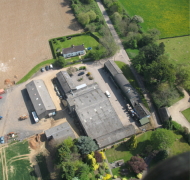 Our Farm
Our Farm
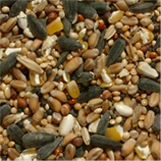 Tips & Advice
Tips & Advice
Contact Us

